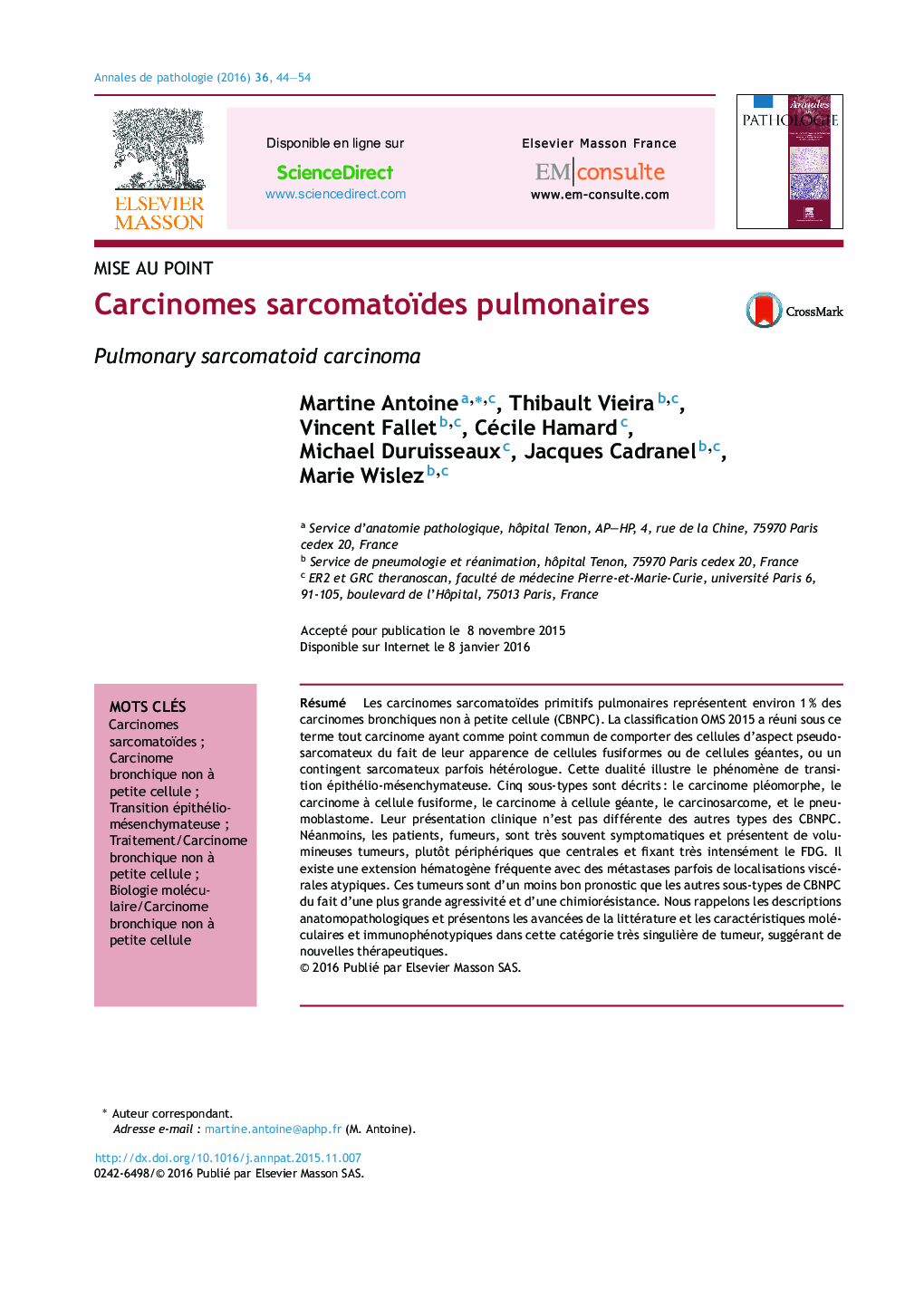| Article ID | Journal | Published Year | Pages | File Type |
|---|---|---|---|---|
| 4127937 | Annales de Pathologie | 2016 | 11 Pages |
Abstract
Pulmonary sarcomatoid carcinomas are a rare group of tumors accounting for about one percent of non-small cell lung carcinoma (NSCLC). In 2015, the World Health Organization classification united under this name all the carcinomas with sarcomatous-like component with spindle cell or giant cell appearance, or associated with a sarcomatous component sometimes heterologous. There are five subtypes: pleomorphic carcinoma, spindle cell carcinoma, giant cell carcinoma, carcinosarcoma and pulmonary blastoma. Clinical characteristics are not specific from the other subtypes of NSCLC. Epithelial to mesenchymal transition pathway may play a key role. Patients, usually tobacco smokers, are frequently symptomatic. Tumors are voluminous more often peripherical than central, with strong fixation on FDG TEP CT. Distant metastases are frequent with atypical visceral locations. These tumors have poorer prognosis than the other NSCLC subtypes because of great aggressivity, and frequent chemoresistance. Here we present pathological description and a review of literature with molecular features in order to better describe these tumors and perhaps introduce new therapeutics.
Keywords
Related Topics
Health Sciences
Medicine and Dentistry
Pathology and Medical Technology
Authors
Martine Antoine, Thibault Vieira, Vincent Fallet, Cécile Hamard, Michael Duruisseaux, Jacques Cadranel, Marie Wislez,
